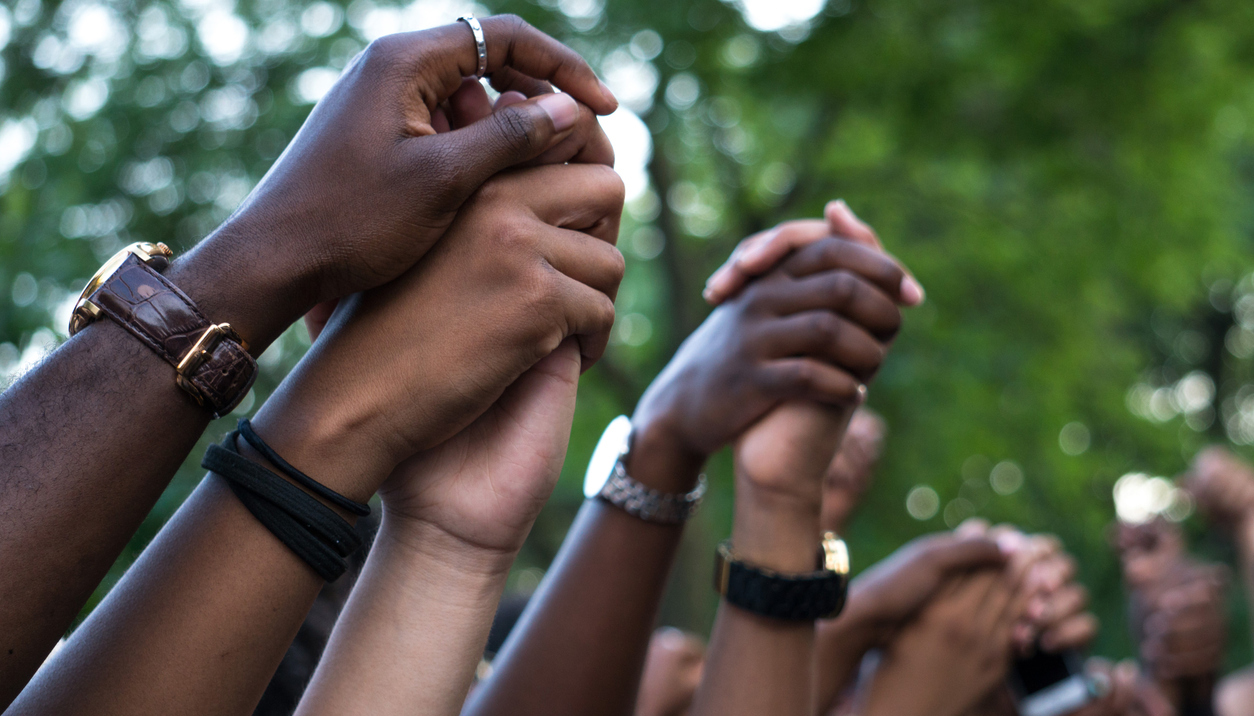
Share On Social!
This is part of the Salud America! Achieving a Cohesive Culture for Health Equity in Latino and All Communities: A Research Review»
More Research is Needed on a Cohesive Culture
It is important to research the relationship between socioeconomic status and education to identify and reduce the risk factors through the improvement of school systems and the development of intervention programs.5,10
Additional studies are also needed to examine the relationships between implicit bias and health care outcomes.
This will provide vital information for the development of interventions that target these implicit biases, which have been shown to contribute to disparities in health care between whites and minority groups such as Latinos. This implicit bias influences individuals’ behavior regardless of counteracting intentions and as such is more difficult to identify and address.49
It is also important to continue research on health disparities. The National Academies of Science, Engineering, and Medicine (NASEM) established a Roundtable on the Promotion of Health Equity to promote health equity and eliminate health disparities via understanding the inequities in health care among ethnic and racial populations, making those inequities known to the public, and increasing research. The roundtable held a workshop in November 2017 titled “Immigration as a Social Determinant of Health;” the goals of the workshop were to describe why the health of immigrants is important to the United States, explain how immigration history contributes to today’s immigration, economic, and health policies, and discuss the role of immigration as a social determinant of health.103
The workshop noted that federal immigration policy historically emphasized the reunification of families, but cultural changes have contributed to a backlash from U.S. natives, and federal deadlock on immigration policy has led to confusing state rules and regulations. In addition, a lack of dialogue between those working on immigration issues and those working on social determinants of health issues has resulted in missed research and policy opportunities.103
This is especially important where mental health is concerned. Policies and mental health programs should be developed to address the traumatic stressors that are associated with assimilation; currently, the U.S. Department of State’s Reception and Placement program works with several agencies to help place immigrants and refugees in communities based on the immigrant’s needs and the available resources. The program provides assistance with language, mental health, medical care, employment, housing, and education, but is only available to immigrants and refugees for three months following arrival in the U.S. So while the Office of Refugee Resettlement provides certain mental health screenings within 90 days of arrival, many refugees have no way to seek treatment once that three-month period is over. Research into the needs of immigrant populations should seek to develop strategies to engage children and youth and address mental health issues in schools, as almost 40% of the refugees settling in the U.S. are children.104
The California Health Interview Survey was cited as a potential model for understanding the health needs and health disparities of immigrant populations. This survey was started in 2001 and interviews more than 20,000 children and adults every year; it is the largest continuous state-based health survey in the United States and is conducted in seven languages. Specific immigration-related questions were added to the survey in 2015 to provide information for research regarding health outcomes for immigrant populations.103
Similar efforts are needed to examine the associations between income poverty, material hardship, and health. In New York City, the Robin Hood Foundation and a group of researchers from Columbia University created the New York City Longitudinal Study of Wellbeing, nicknamed the “poverty tracker.” The poverty tracker surveys approximately 2,300 residents of New York City; interviews were conducted every three months over a two-year period. The purpose of the tracker was to provide a multidimensional understanding of economic disadvantage, including housing hardship, unmet medical needs, food insecurity, inability to pay bills, and running out of money. Results showed that nearly two thirds of black and Latino families experienced at least one type of hardship, and almost half experienced persistent hardship (that is, at baseline and follow-up). These types of studies are important drivers for the development of initiatives to address issues of hardship, including emergency food assistance, eviction prevention, and navigator-type services.105
 In a review of the literature regarding the relationship between racism and child health, Pachter and Garcia Coll106 found that the majority of studies regarding racism and behavioral, mental and physical child health outcomes were conducted on African Americans, adolescents and older children. In addition, many did not have a standardized method of measuring racism, and many of the measures used were created for use in adult populations. The authors noted that more studies are needed that include other racial and ethnic minority groups, including Latinos. These studies should also include younger children and should use measures that are better suited for assessing the effects of racism on younger children rather than adults.106
In a review of the literature regarding the relationship between racism and child health, Pachter and Garcia Coll106 found that the majority of studies regarding racism and behavioral, mental and physical child health outcomes were conducted on African Americans, adolescents and older children. In addition, many did not have a standardized method of measuring racism, and many of the measures used were created for use in adult populations. The authors noted that more studies are needed that include other racial and ethnic minority groups, including Latinos. These studies should also include younger children and should use measures that are better suited for assessing the effects of racism on younger children rather than adults.106
Additional research into prejudice- and system justification-based interventions is necessary as well. Future research into this area should focus on longitudinal study designs to determine the long-term effects of such interventions. These interventions also require strengthening; those based on developmental research hold the most promise. The development of alternative approaches to changing intergroup attitudes are important; this includes the involvement of parents, teachers, and peers to aid in the promotion of positive intergroup socialization. One interesting subset of intergroup communication, and one that needs further investigating, is that which occurs on the Internet. We know that social media can bring people together to help effect social change, but why, and how can this be used to further improve intergroup attitudes?78,102
And what about social cohesion? How do we counteract the attitudes and environments that prevent unity and equality, and reverse moral disengagement?
The Sunnydale initiative in San Francisco is a great example of instituting changes for the collective good while gathering long-term data on the impact of these changes, and similar data-gathering efforts should be mounted in other areas where steps are being taken to improve communities.
Equally important, though, is a change in the attitude of the haves toward the have nots, the privileged versus the less fortunate: we need to directly refute the mechanisms of moral disengagement by debunking the idea that social programs create dependency, reversing stereotypes, and educating people about poverty. As McAlister and Patnaik succinctly put it, reducing disparities among the poor “requires change in the heart and minds of the more fortunate.”71
A concerted, collaborative effort between federal and local governments, health departments, hospitals and hospital systems, school systems, community organizations, and community members is necessary to address the significant racial/ethnic and socioeconomic disparities in the United States, and to create a cohesive culture where everyone can thrive.
Quick links from our Research Review »
See the Guide: System Justification!
See the Guide: Moral Disengagement!
More from our Research Review »
- Introduction/Methods
- Research: Poverty among Latinos
- Research: Rural Poverty
- Research: Poverty and Healthcare
- Research: Discrimination and Education
- Research: Discrimination and Outcomes
- Mechanism: Implicit Bias
- Mechanism: System Justification
- Mechanism: Moral Disengagement
- Strategy: Intergroup Contact Theory
- Strategy: Peer Modeling
- Strategy: Implicit Bias Training
- Strategy: Effective Communication
- Strategy: Social Media for Social Change
- Strategy: Building Social Cohesion
- Policy Implications
- Future Research
References for this section »
5. Semega J, Kollar M, Creamer J, Mohanty A. Income and Poverty in the United States: 2018 Current Population Reports.; 2019.
10. County Health Rankings & Roadmaps. 2019 County Health Rankings Key Findings Report.; 2019. https://www.countyhealthrankings.org/reports/2019-county-health-rankings-key-findings-report. Accessed June 11, 2020.
49. Hall WJ, Chapman M V., Lee KM, et al. Implicit racial/ethnic bias among health care professionals and its influence on health care outcomes: A systematic review. Am J Public Health. 2015;105(12):e60-e76. doi:10.2105/AJPH.2015.302903
71. McAlister AL, Patnaik A. Understanding Opposition to Disparity Reduction. In: 13th Annual Disparities in Helath in America: Working Toward Social Justice Workshop. Houston, TX; 2015.
78. Beelmann A, Heinemann KS. Preventing prejudice and improving intergroup attitudes: A meta-analysis of child and adolescent training programs ☆ , ☆☆. 2014. doi:10.1016/j.appdev.2013.11.002
102. Ferguson K. Countering Violent Extremism through Media and Communication Strategies A Review of the Evidence.; 2016. www.paccsresearch.org.uk. Accessed June 15, 2020.
103. Olson S, Anderson K, The National Academies of Science Engineering and Medicine (NAS). Immigration as a Social Determinant of Health. National Academies Press; 2018. doi:10.17226/25204
104. Burbage ML, Klein Walker D. A Call to Strengthen Mental Health Supports for Refugee Children and Youth. NAM Perspect. 2018;8(8). doi:10.31478/201808a
105. Neckerman KM, Garfinkel I, Teitler JO, Waldfogel J, Wimer C. Beyond Income Poverty: Measuring Disadvantage in Terms of Material Hardship and Health. Acad Pediatr. 2016;16(3):S52-S59. doi:10.1016/j.acap.2016.01.015
106. Pachter LM, García Coll C. Racism and child health: A review of the literature and future directions. J Dev Behav Pediatr. 2009;30(3):255-263. doi:10.1097/DBP.0b013e3181a7ed5a
By The Numbers
23.7
percent
of Latino children are living in poverty



